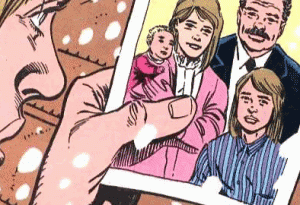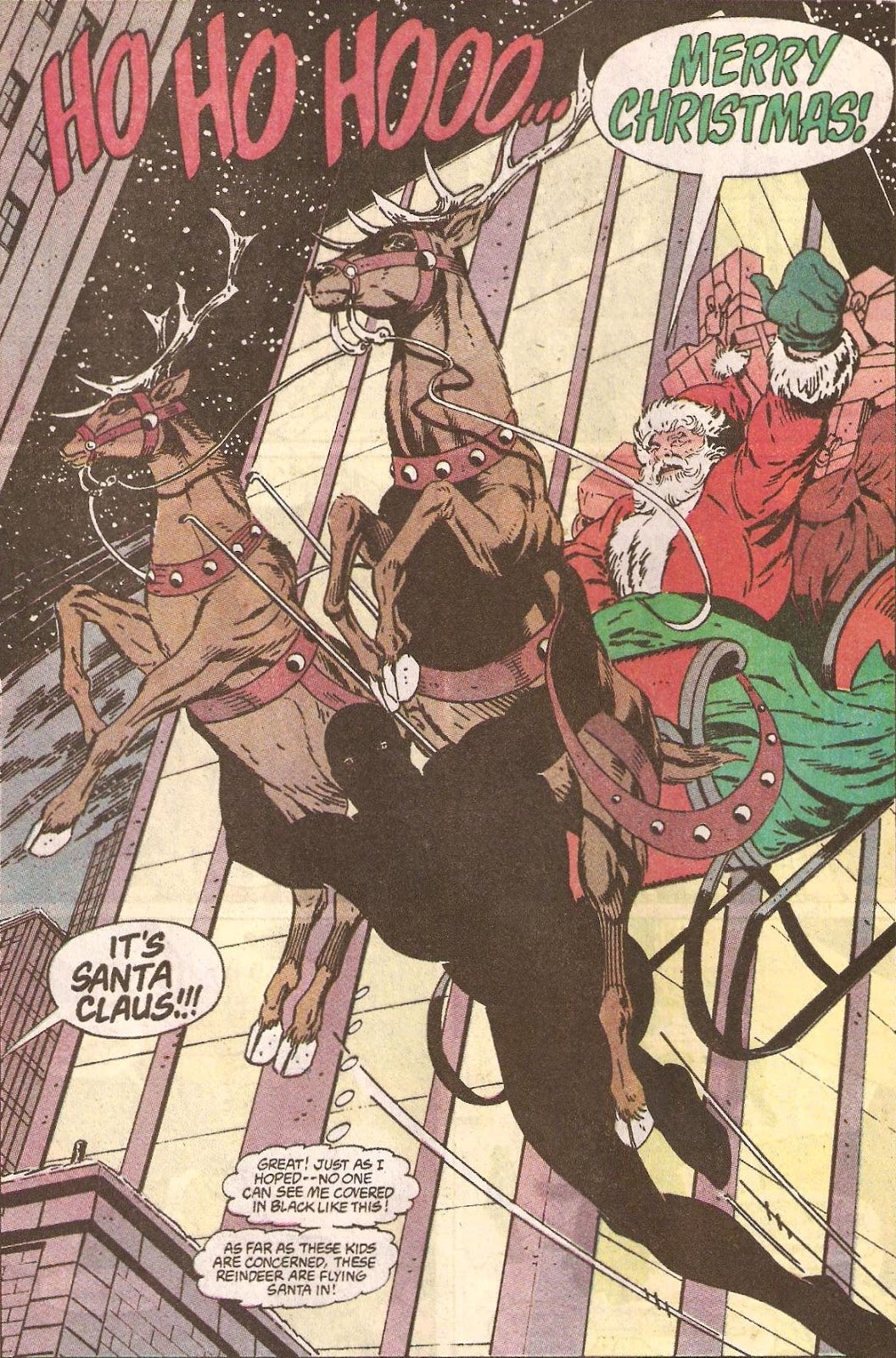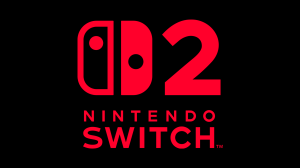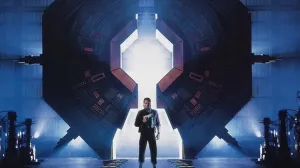Tomorrow will see the release of Action Comics #999, and it is not only the final three-digit issue of the series that will ever see print, but also the final regular issue written exclusively by Dan Jurgens, the writer who shepherded the title through DC’s Rebirth and into the coming era of Marvel expat Brian Michael Bendis.
Videos by ComicBook.com
Jurgens on Superman was an obvious choice at the time: not only had he just cracked the code on presenting an older, married Superman to readers in a way that did not seem to offend DC editorial with Superman: Lois and Clark, but he was the public face of the Man of Steel during one of the character’s most successful eras: the so-called “From Crisis to Crisis” era that began with John Byrne’s 1986 reboot The Man of Steel and was presented fairly consistently until 2000, when the first of several mini-reboots reshaped the character’s mythology.
That period was largely defined by a spirit of collaboration between four ongoing Superman titles, so it is always difficult to know exactly what any given writer might have brought to the table. In “The Death of Superman” and its follow-ups “Funeral For a Friend” and “The Reign of the Supermen,” Jurgens was one of at least four writers working on the characters at any given time. Other major Superman events of the ’90s may have been somewhat less disperse (there were points where Jurgens wrote and/or drew Superman in two titles per month), but we are going to ignore the gray area there and include for the sake of argument both stories created entirely by Jurgens or those in which he had a major role when we ask…
…what are the essential Dan Jurgens Superman stories? What are the issues, arcs, or touchstones that help shape and define the years one of DC’s most dependable writers and artists spent on their flagship character?
Well, we have done our best to put together a list…!
Dark Knight Over Metropolis
Following the Byrne reboot, “Dark Knight Over Metropolis” was the first story that crossed the Dark Knight over with the Man of Steel within the confines of the monthly Superman titles.
It was a strange story that looped through a couple of post-Crisis Superman stories that had been setting it up, and eventually landed on what became an iconic, symbolic scene that was shorthand for the pair’s relationship: Lex Luthor’s wayward Kryptonite ring, recovered by Batman, was offered to Superman as a symbol of trust. Superman surprised Batman by rejecting the offer, saying essentially that he returned Batman’s trust, and that if he (Superman) were ever to become possessed, insane, or in some other way a danger to the world, it was Batman whom he trusted to wield the ring.
The Adventures of Superman #466

A pastiche of The Fantastic Four #1, one of Jurgens’s first major Superman stories was never intended to feel quite so epic.
The issue introduced readers to the doomed crew of an experimental shuttle, bombarded by radiation and given fantastic (get it?) powers for a short period before they succumbed to radiation poisoning.
The captain of the shuttle, who enlisted Superman to help him save his wife, was Hank Henshaw, and after Henshaw’s death, his intelligence would be transferred to the ship’s computer, which would ultimately come to life as a robot. After a single, relatively forgettable story that featured a panicked and desperate robot Henshaw as a villain, the character was seemingly discarded, shot into space in Superman’s rocket, before returning years later as the Cyborg Superman.
Reading The Adventures of Superman #466 now has a kind of bittersweet twinge to it; Jurgens never intended anything bigger for Henshaw, so his tragedy is just that.
The Adventures of Superman #474
Fans of the post-Crisis Superman came to know Jurgens as a writer who could handle both the epic, widescreen action of the Last Son of Krypton’s sci-fi exploits and also the small, personal stories that defined Clark Kent.
This was one such story: In The Adventures of Superman #474, Clark returned to Smallville for a meeting with the family of a high school classmate who had been in a coma since a drunk driving accident. Clark had not yet developed his powers, but always regretted not stopping the situation, and came face to face with his friend’s family on New Year’s Eve, as they prepare to pull the plug on his life support.
The story is quiet, sad — and reflects the kind of humanity with which Jurgens would imbue his writing for years. Depite flirting with the edges of a hot-button issue (the family, it was explained, had to spend years in court convincing judges that their son would never wake up), Jurgens did so in a way that focused on the emotional cost rather than trying to send a message about right and wrong. This is a strategy you can see him deploy over and over again, as late as in “The Oz Effect,” 2017’s mini-event that revealed the identity of Mr. Oz.
Time and Time Again

This inter-title event has Jurgens’s fingerprints all over it.
Time-travel takes center stage in a tale that features Jurgens’s creation Booster Gold and some of his favorite ’90s supporting characters, the time-traveling Linear Men. Getting in between dueling factions of time-travelers, Superman finds himself imbued with chronal energy and tossed through time — a storytelling device Jurgens would use again in Convergence: Booster Gold about 25 years later.
“Time And Time Again” was a big-picture story told in bite-sized, one-and-done stories that all connected to tell a coherent whole. Similar to how he would later structure the comedic Bat-Mite miniseries for DC You, the story was greater than the sum of its parts and an early indicator of the kind of ambitious, character-driven event storytelling Jurgens would be known for.
Superman #59

Nine issues after Superman popped the question to Lois Lane in Superman #50, he took her to a mountaintop where they could finally have some time alone.
The proposal happened at the end of a crossover story titled “Krisis of the Krimson Kryptonite,” which pitted a powerless Superman against Lex Luthor and Intergang, all while he struggled to unerstand what had happened.
What had happened, as it turned out, was Mr. Mxyzptlk, and when he was eventually repelled and the status quo returned, Superman shook it up again. But before he could do much about it, there came “Time and Time Again,” and the Man of Steel found himself unable to get a moment to breathe.
Literally gifted with time (from one of the Linear Men, as a thank you for his help), Superman managed to sweep Lois away to have some time alone in quiet, intimate conversation about their love and their future. While it was Jerry Ordway who wrote the proposal itself, for many fans of the era it was Jurgens who delivered the statement of purpose that explained why the post-Crisis Lois and Clark needed to tie the knot.
Panic in the Sky
“Panic in the Sky,” its title lifted from an episode of The Adventures of Superman TV show, was a step beyond “Time and Time Again,” connecting the by-then four Superman titles for a storyline that involved most of DC’s most prominent heroes. Brainiac, thought catatonic after a series of stories a few years prior, returned with a vengeance, leading an alien invasion that had ties to the “Exile in Space” storyline that had wrapped a year before.
This would prove to be a useful template for later event stories, as “The Death of Superman” could be seen as cleaning up nearly every dangling plot thread left over from John Byrne’s 1986 reboot until the end of 1992 when Superman and Doomsday finally clashed.
Gorgeously illustrated by Jurgens, Tom Grummett, Jackson Guice, Jon Bogdanove, and more at the height of their powers, the relatively straightforward story took on a new dimension due to its place in a post-Crisis DC Universe that had scarcely dealt with aliens, and its aforementioned ties to the established mythology of the titles.
Superman #64 & #76
For two years in the early ’90s, Jurgens gave fans an unconventional, and very human, idea of what Superman does at Christmastime in a pair of stories titled “Metropolis Mailbag.”
The second story, actually, fell just after the 1992 death of Superman, so while the first dealt with the emotional toll that taking on a never-ending battle of a different type took on Superman, the second was more about the heroes of the DC Universe trying to get their heads around the kind of difference Superman made during his life.
The concept revolved around Superman visiting the Thirty-Fourth Street Post Office (in Metropolis, not New York, although there’s a major one there, so it’s likely that’s why they gave it the address they did) and answering mail.
Superman says that it’s his most thankless and depressing job: while he might make headway against villains, the mail never ends…and a lot of it is just crap. Business propositions, shady characters trying to make themselves sympathetic and on and on.
“Don’t they realize that you’d never do something like that?” Lois, who’s there ostensibly to write a story for the Daily Planet, asks her then-fiancee. “Don’t they understand what Superman is all about?”
That is, of course, a big thrust of this story. During the post-Crisis era, writers like John Byrne, Marv Wolfman, Roger Stern, Louise Simonson and Jurgens himself were tasked with reinventing a Superman who had been significantly depowered, whose parents were still alive and who, generally speaking, was more down-to-earth. The”Metropolis Mailbag” stories did that in two different ways: by demonstrating his love for humanity and his frustration with the apparent futility of the task and those who would try to take advantage of his good nature.
The story saw Superman bringing an aging Holocaust survivor face to face with her sister for the first time in fifty years and the last before her aged, ailing sibling passed away.
“I still can’t believe a man as important as you has the time to help me!” Says the woman as Superman flies her to Germany. “There must be so many more urgent matters that require your attention.”
Superman dismisses this notion, though, and the story reminds us that at his core, Superman is a very egalitarian hero. There aren’t those more or less “worthy,” there are just those who need help, and Superman is someone who can use his great abilities to bring them that help.
It also delivered on his humanity in a different way: he found a letter from a young boy asking to help excise an inoperable brain tumor from his father. Superman, who went to tell the boy there are things that even he cannot do, arrived minutes after the man had died and had to explain that, at the end of the day, he isn’t a god. The only hope he could offer them is a very human one: encouraging his wife to help others by donating her husband’s usable organs.
The story was a clever one, essentially an anthology but contained within a standard comic book size; a third story dealt with budget cuts that would have meant poor kids didn’t get gifts and a visit from Santa — until Superman agreed to stand in for Santa and contacted Bruce Wayne for help funding the presents.
The story is melancholy and heartwarming; it’s very much like a real Christmas, as challenging as it is fulfilling, and the art by Jackson (Butch) Guice matched the tone perfectly.
SupermanWritten by Jurgens as a cynical teenager who idolized Guy Gardner and didn’t see the value in Superman, Mitch’s tune changed when the shattered League lay unconscious around him and Superman surrendered the upper hand in his fight with Doomsday to return to the burning house and save the Anderson family — again, dealing with the idea that Superman doesn’t see shades of need; stopping Doomsday came second to saving the lives of three strangers.
As a character, Mitch had grown a lot in the days between when Superman fell and when the second Mailbag happened, as his visit to Superman’s tomb indicated. His story was doubly touching because while he struggled with guilt and sorrow in Metropolis with Jimmy Olsen, the Justice League was helping to rebuild his home back in Ohio and reunite his estranged father with the loved ones he almost lost.

If Christmas stories are among the schmaltziest in popular fiction, then certainly a gleaming, inspirational figure like Superman is almost a natural fit for them. There have likely been dozens of Superman Christmas stories over the years, but there’s something touching and human about the “Metropolis Mailbag” tales that make them stand out among those this writer has read.
The Death (and Return) of Superman

The Death and Return of Superman was the ultimate event story in the eyes of many ’90s comics readers, even if it was never meant to be that way (more on that in a moment).
In the late ’80s and early ’90s, the Superman titles were critical favorites but mediocre sellers. During a story summit, one of the ideas Jurgens brought to the table was a massive, physical juggernaut of a villain that could have a widescreen melee with Superman and the Justice League, the way characters like Apocalypse were doing in the wildly popular X-Men titles at the time.
Not everyone in the room was sold, but circumstances conspired to bring Jurgens’s idea to fruition in a battle that would see Superman and the villain — called Doomsday — battle up the East Coast of the US and finally pummel each other to death in Metropolis.
Of course, both would return — it’s comics, after all! — but the heart and soul of the story was in “Funeral For a Friend,” the time during which the world had to go without a Superman…and his eventually return was marred by a group of imitators, one of whom was a much more powerful and much more deranged Hank Henshaw, who committed mass murder in Superman’s name in order to damage his reputation since he couldn’t kill the man.
The death of Superman itself built to a staggering crescendo, with the number of panels per page dropping with each part of the battle with Doomsday until eventually the Man of Steel was trading blows with the monster on a series of full-page splashes drawn by Jurgens, culminating with a massive, three-page fold out image of his death.
Honorable mention here goes to Superman: Day of Doom, a 2002 series that explored a reporter who did not care much for super humans having to face what Superman means to the world when he was assigned to write a retrospective about Superman’s death. It was clever, moody, meta, and featured gorgeous art by Jurgens and Bill Sienkiewicz.
Superman #86
An idea that interested post-Crisis on Infinite Earths Superman writers was clearly the idea of Superman being open to change. Gone was the paternal Superman of the Silver Age, and in came a man who was confident and always seemed to know the right thing — but sometimes had to feel his way around dark, blind alleys to decide what that right thing was.
One such story was “The Last of the Sun-Devils,” a kind of odd sequel to Sun Devils, a story Jurgens had drawn, and eventually written, with Gerry Conway. Sun Devils might be largely forgotten, but this story was a fascinating artifact.
Following up on a series that may or may not have taken place in the DC Universe’s future, a Star Wars-like battle of scrappy humanoid rebels against a massive, lizard-like evil empire offered pretty cut-and-dried morals.
In Superman #86, though, the dictator who had been sent on the run at the end of the 12-issue Sun Devils maxi-series was now elderly, infirm, and on the run from a mad, obsessed, gun-toting Rik Sunn, the hero of the original series.
Rather than offer the readers of Sun Devils a simple happy ending, the issue was a sort of dark coda that looked dozens of years into the futures of the characters to see what Rik might be like if he never settled down to find a normal life for himself, and remained an increasingly-militant revolutionary for the rest of his days.
Superman: The Wedding Album

Jurgens, as well as most of the other then-current Superman writers, artists, editors, and luminaries, attended the wedding of Clark Kent and Lois Lane.
Coming off of The Final Night, a storyline in which Earth’s sun was briefly extinguished and Superman lost his powers, Clark took the opportunity to cut the long hair he had been sporting since his return from the grave and finally commit fully to Lois Lane.
The marriage of Lois and Clark had been in the works for years in the real world: originally, it was planned for either Superman #75 or The Adventures of Superman #500, the issues which eventually became the death and then return of Superman after plans to marry Lois and Clark were nixed by corporate due to fears it might interfere with the plans of the TV series Lois & Clark: The New Adventures of Superman.
There remains a healthy chunk of the audience who do not like a married Superman, but one of the elements of the post-Crisis era that has continued on through the various tweaks to Superman’s origin is that Lois Lane, who appeared alongside Superman in Action Comics #1 and has as long a history in American popular culture as he does, was afforded significantly more dignity than she had been in the past.
Dozens of writers and artists contributed to The Wedding Album in the kind of massive, sentimental jam issue that appears to be in the cards for next month’s Action Comics #1000, but it was the then-regular teams who did most of the heavy lifting and Jurgens, then the undisputed model for how Superman was supposed to be drawn, who penciled the ceremony itself.
Superman: Lois and Clark
Over two issues of a Convergence tie-in event and eight issues of a miniseries, Jurgens successfully took the ailing, directionless Superman status quo and gave it a jolt of energy.
Part old-school, part reinvention, Superman: Lois and Clark imagined that, rather than being removed from existence following the events of Flashpoint, the post-Crisis, pre-Flashpoint Superman and Lois Lane had a child and lived anonymously within the DC Universe for about a decade.
The series reintroduced and modernized Hank Henshaw, gave the Man of Steel some creepy new villains and some big ideas inspired by the likes of Geoff Johns and Grant Morrison, who had well-loved runs in between Jurgens’s bites at the apple, and re-established some of the basics of the Superman mythology.
The result was one of the best stand-alone Superman stories of the 21st Century and a springboard for exciting things to come.
When DC announced Rebirth, one of their initial announcements was that the New 52 Superman would die, and be replaced by his pre-Flashpoint countepart, who would star in an Action Comics written by Jurgens. At the time, fans hoped that he still had some great Superman stories in him, and his most ardent fans hoped he would be around until #1000.
The Oz Effect

Eventually, the time came to reveal the identity of Mister Oz, a mysterious, hooded figure who had been lingering around the periphery of Superman’s life since before the Rebirth reconfiguration…and it was a hell of a story.
Mister Oz, it turned out, was Jor-El, Superman’s birth father, rescued from Krypton by as-yet-unexplained forces presumed to be Doctor Manhattan from Watchmen and delivered into a harsh and unforgiving life on Earth that left him convinced that mankind needed only the smallest nudge in the wrong direction and they would become bloody-minded and cruel.
Jor-El insisted that Earth did not deserve Superman, or his son Jon, and that the pair should join him in retreat to a more peaceful and idyllic locale.
This, again, gave Jurgens an opportunity to comment in his deeply humanistic way on the divisions plaguing American society and global politics — something that got him pilloried by some political extremists who felt they were being targeted. Ultimately, though, the message wasn’t political but moral: every life matters to Superman. It’s what makes him Superman, and it’s why he would never leave us.
Action Comics #999
There is much to recommend from Jurgens’s Rebirth run, and given the easy availability of trade paperbacks and hardcovers of current comics, we would suggest that you read as much of it as you find entertaining. After a long period where Superman simply had not felt like Superman, Rebirth (guided by Jurgens as well as the writing duo of Peter J. Tomasi and Patrick Gleason on Superman) rebuilt the troubled franchise.
The two stand-out stories, where it seemed Jurgens was making a major statement, were “The Oz Effect” and the finale.
Personally, I would include “Booster Shot,” the story that led from “The Oz Effect” into the final issue, but it was really more than anything a spotlight for Jurgens to follow through on themes he had explored in “Time and Time Again,” Zero Hour: A Crisis in Time, Booster Gold, and “The Oz Effect,” all of which are worth reading.
Action Comics #999 deals with two major stories, one a Superman story and one a Clark story. Both are handled very well, and both give a sense that one of the things that makes Clark Kent a great human being, and Superman a great hero, is his resistance to pettiness. It does not matter that you might try to hurt him, Superman knows that every person is worth saving, and every person is worth trying to help…even if they don’t want it.
It is a great note for Jurgens to go out on, and while he will tell a couple of more Superman stories in the near future (an Action Comics one-shot and a story in Action #1000), this feels like a declaration of where he hoped to leave a character he has loved and helped to shape for more than 25 years.










